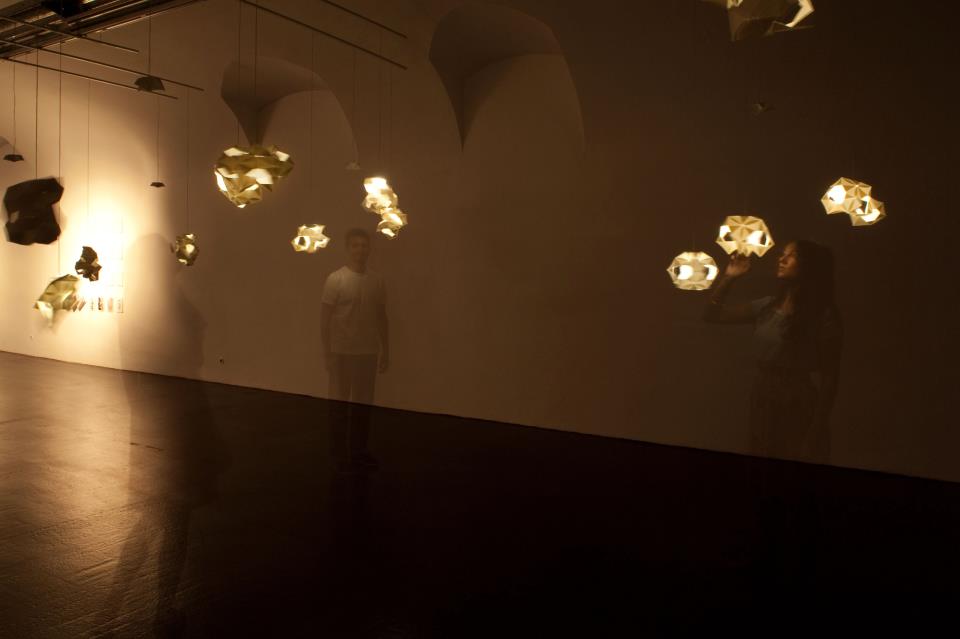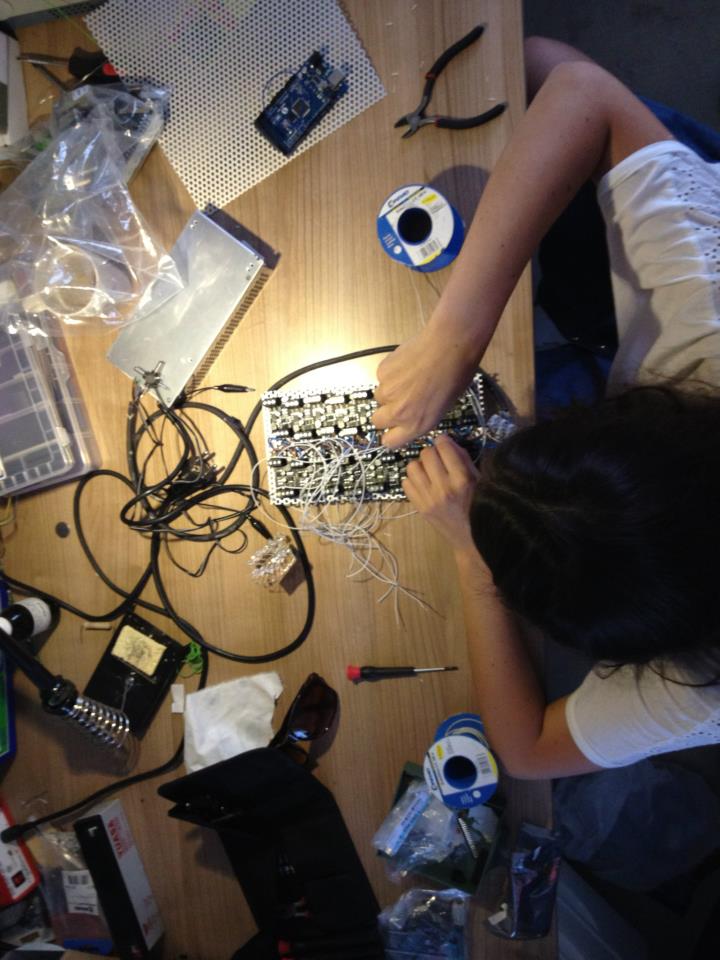THE COMMITTEE OF SLEEP
The Committee of Sleep macht sich das Prinzip des Energy Scavenging, der Plünderung überschüssiger Energie lebender Organismen, zunutze. taliaYsebastian nehmen Anleihe am Vorbild der Natur – konkret an der Sea Orange, einem mit Algen interagierenden Schwamm, der lichterzeugende Eigenschaften aufweist. Die raumgreifende, auf Papierstrukturen basierende Installation ist mit Stromkreisen aus organischen Leuchtdioden (OLEDs) versehen. Die Objekte nehmen die durch die Bewegung der BesucherInnen im Raum freigesetzte Energie auf und geben sie an die Leuchtdioden weiter. Die Lichtsituation variiert somit entsprechend der BesucherInnenfrequenz in der Ausstellung.
taliaYsebastian - The Committee of Sleep
In Kooperation mit:
taliaYsebastian
Design for Social and Environmetal Impact duo based in Vienna, focusing on “human design, integrating future technologies”
www.taliaYsebastian.com
OSRAM
providers of OLED technology and knowledge transfer in this area
www.osram.de
Simon Laburda & Nora Dibowski
interaction & electronic design
www.dkia.at
Susanne Gosztonyi
Transfer of knowledge
www.bionicfacades.net

